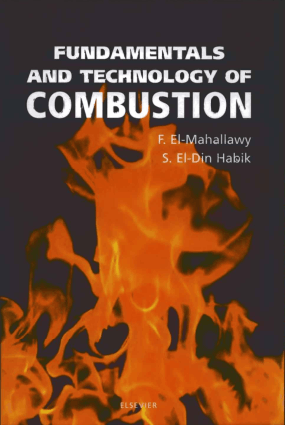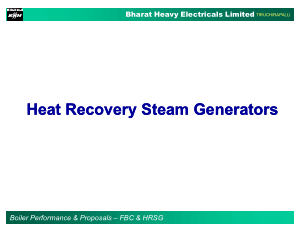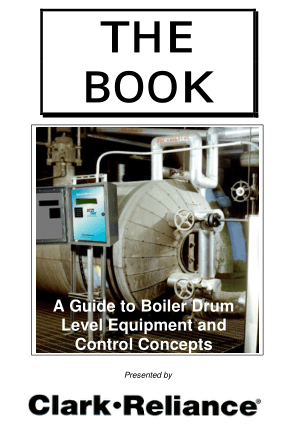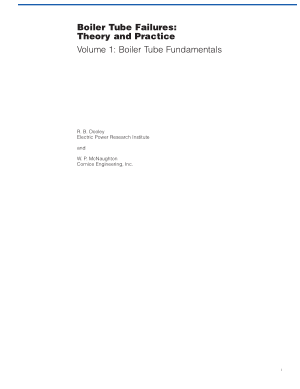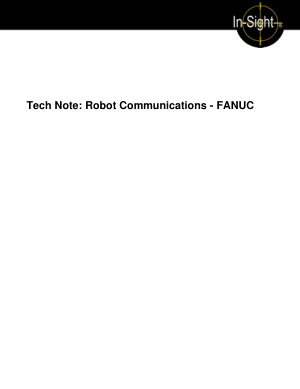Contents
Acknowledgements
Preface
CHAPTER I : COMBUSTION FUNDAMENTALS
1.1 Introduction
1.2 Energy Sources
1.2.1 Fuels
1.2.2 Fuel cells
1.3.2 Basics of thermodynamics
1.4 Combustion Stoichiometry and Thermochemical Calculations
1.4.1 Combustion stoichiometry
1.4.2 Thermochemical calculations
1.3 Some Related Thermodynamic Fundamentals
Ideal gases and mass conservation
– Enthalpy and enthalpy of formation, 22
– Internal energy – Entropy, 26
1.5 Chemical Kinetics and Equilibrium
1.5.1 Kinetic theory of gases
1 S.2 Chemical kinetics
1.5.3 Reaction kinetics
1.5.4 Chemical equilibrium – Basic equations, 34
– Equilibrium modeling, 37
– Equilibrium composition and temperature, 38 – Conservation, energy and equilibrium equations, 39
1.6 Transport Phenomena, and Modeling
1.6.1 Real gases
1.6.2 Transport phenomena of gases at low density
– Theory of viscosity, 44
– Theory of thermal conductivity, 46
– Theory of ordinary diffusion, 47
1.6.3 Transport properties of multi-component mixtures
1.6.4 Transport modeling
1.7 Modeling in Combustion Chemistry
1.8 Combustion Generated Air Pollution
1.8.1 Background
1.8.2 Air quality and air pollution
1.8.3 Legislation of air pollution
1.9 Pollutants Formation and Oxidation Kinetics
1.9.1 Kinetics of nitrogen compounds
1.9.2 Kinetics of pollutants originating from sulphur – Sulphur dioxide formation, 66 – Sulphur trioxide formation, 66
1.9.3 Kinetics of carbon monoxide
1.10.1 Reduction techniques in combustion equipment
1.10 Pollutant Emissions Reduction Techniques
– Combustion modification techniques for NO, reduction, 68
– Post-combustion techniques for NO, reduction, 7 1
– Sulphur compounds reduction techniques, 73
1.10.2 Emission reduction techniques in vehicles
1.10.3 Greenhouse warming and its reduction techniques
CHAPTER 2: LAMINAR PREMIXED FLAMES
2.1 Introduction
2.2 Definitions
2.2.1 Flammability limits
2.2.2 Laminar flame stabilization
2.2.3 Flame temperature
2.2.4 Burning velocity of a premixed flame
– Stationary methods, 83
– Propagation methods, 84
2.2.5 Ignition
2.3 Theory and Kinetics of Laminar Premixed Flames
2.3.1 Background to flame propagation
2.3.2 Kinetic model of premixed flames
2.3.3 Transport parameters
2.3.4 Reaction mechanisms for simple fuels
2.4 Simple Fuels-Nt-02 Flames
2.4.1 Hydrogen-oxygen-nitrogen flames
2.4.2 Hydrogen-H20-CO-02-N2 flames
2.4.3 Methane-oxygen-nitrogen flames
2.4.4 Methanol-air flames
2.4.5 Methanol-water-air flames
2.4.6 Propane-air flames
2.4.7 Ethane-air flames
2.4.8 Natural gas-air flames
2.5 Generalization of Flame Characteristics
2.5.1 Laminar burning velocity
– General background, 198 – Review of burning velocity data, 199
– General correlations of burning velocity, 199
2.5.2 General correlations of heat release rate
2.6.1 Background to reduced kinetic models
2.6.2 Computational methods and reaction mechanisms
– Computational approach, 213
– Reduced reaction mechanisms, 213
– Computational procedure, 215
2.6.3 Experimental and computational results
2.7 Effect of Fuel Type and Additives on Emissions
and Flame Characteristics
2.7.1 Effect of fuel type on nitrogen compounds
2.7.2 Hz and Cz& addition to C3H8-air flames
2.7.3 Hz and CO addition to CH4-air flames
2.8.1 Experimental study
2.8.2 Computational method and discussion
2.9 Flame Extinction Pattern
2.6 High Hydrocarbon Fuels-Air Flames
2.8 Porous Burners
CHAPTER 3: TURBULENT PREMZXED AND DZFFUSZON
FLAMES
Introduction
Characteristics of Diffusion Flames
3.2.1 Diffusion flame length
3.2.2 Opposed diffusion flames
Turbulent Burning
Turbulence Models
Interaction Between Turbulence and Chemical Kinetics
3.5.1 The influence of turbulence on the chemical reactions
3.5.2 Fantasy versus realism in chemical kinetics description
Flame Stabilization
3.6.1 Introduction
3.6.2 Stability of premixed flames
3.6.3 Stability of diffusion flames
3.6.4 Flame stabilization by non-streamlined bodies
– Effect of the stabilizer geometry, 29 1
– Stabilization of free diffusion flames, 303
3.7 Turbulent Premixed Flames 311
3.7.1 Introduction 311
3.7.2 Laminar flamelet model (LFW) 311
3.7.3 Structure and heat release rate 3 15
– Jet-stirred conical reactor, 316 – Tunnel burner with annular entry of a pre-mixture, 318 – Turbulent vertical free flames, 320
– Turbulent horizontal flat flames, 326
– Burning velocity in closed systems, 338
– Burning velocity in horizontal flat flames, 342
3.7.4 Turbulent burning velocity
3.8 Turbulent Free Diffusion Flames
3.8.1 Introduction
3.8.2 Structure and height of diffusion flames
– Theoretical calculation of flame height, 347
– Effect of buoyancy, 35 1
– Effect of relative angle between fuel and air jets, 358 – Effect of air swirl, 365 – Structure of vertical flat free flames, 371 – Structure of lifted turbulent jet flames, 374
CHAPTER 4: CHARACTERISTICS OF TURBULENT
CONFINED DIFFUSION FLAMES
4.1 Introduction
4.2 Mixing and Flow Fields of Jets
4.2.1 Free jets
4.2.2 Annular and coaxial jets
4.2.3 Wall jets
4.2.4 Swirling jets
4.2.5 Confined jets
4.3 Swirling Flows in Combustion Systems
4.3.1 Introduction
4.3.2 Methods of combustion air swirling
4.3.3 Effect of combustion air swirling
4.4 Flow and Mixing in Cold Models
4.4.1 Co-axial confined jets
4.4.2 Asymmetric confined jets
4.4.3 Co-flowing jets with large velocity difference
4.4.4 Two swirling confined jets
4.4.5 Forced flow reversal
4.4.6 Furnace and burner geometry
4.5 Characteristics of Confined Flames
4.5.1 Aerodynamics and turbulent mixing
– Flow pattern, 424
– Turbulent mixing, 430
4.5.2 Heat liberation in confined flames
– Introduction, 438
– Heat liberation in flame tubes, 440
– Effect of air swirl on flow and mixing, 448 – Effect of air swirl on heat liberation, 454
– Effect of fuel-air ratio, 457
– Forced flow reversal, 460
– Furnace and burner geometry, 461
– Effect of the direction of air and fuel entries, 464
– Bluff bodies, 478
4.6 Emission and Combustion Modeling in Flames
4.6.1 PDF model using in situ tabulation chemistry method
4.6.2 Coherent flame model
4.6.3 Stochastic model
4.6.4 Three dimensions CRFD model
4.5.3 Effect of different parameters
CHAPTER 5: COMBUSTION, HEAT TRANSFER, AND
EMISSION IN BOILERS AND FURNACES
5.1 Steam Boilers
5.1.1 Fire and water tube boilers
5.1.1.1 Background
5.1.1.2 Boiler types and classifications
5.1.1.3 Applications of steam generators
5.1.2 Radiative heat transfer
5.1.2.1 Historical citation
5.1.2.2 Equation of radiant energy transfer
5.1.2.3 Methodology
– Integrating by use of an integrating factor, 5 10
– Diffusion method, 510 – Approximate solutions, 5 1 1
– The Monte Carlo technique, 513 – The engineering treatment of gas radiation, 514
– Flux and discrete ordinates methods, 5 15
– Zonal method of analysis, 522 – Radiation calculation in boiler furnaces, 524
5.1.3 Convective heat transfer
5.1.4 Combustion and heat transfer in flame tubes
5.1.4.1 Horizontal flame tube of circular cross section
– Flame structure, 532 – Heat transfer, 535 – Computational analysis and results
– Experimental study, 545 – Computational analysis, 549
5.1.4.3 Horizontai flame tube of square cross section
5.1.5 Combustion and heat transfer in water-tube boilers
5.1.5.1 Experimental study
– Flame structure, 558
– Heat transfer, 564
– Zonal method, 566
– Discrete ordinates transfer method, 569
– Boiler heat transfer modeling, 575
– Comparison between different methods, 579
– Overview, 588
– Experimental and computational analysis, 593
5.1.4.2 Vertical flame tube of circular cross section
5.1.5.2 Computational analysis of heat transfer
5.1.5.3 Heat transfer from flame impingement
5.1.6 Emission and Emission Control
5.1.6.1 Combustion modification techniques – Flue gas re-circulation (FGR), 598 – Water and steam injection, 601
– Air and fuel staging, 602
– Burner configuration and duration, 603
– Re-burning, 607
– Nitrogen oxides techniques, 609 – Sulfur dioxide techniques, 613
5.1.6.2 Post-combustion techniques 609
5.1.6.3 Combination of NO, and SO2 control techniques 624
5.2 Tangentially-Fired Furnaces (TFFs) 629
5.2.1 Introduction 629
5.2.2 General background 630 – Overview, 630
– Configuration, 632
– Ignition limits, 636
– Effect of burner tripping, 636
– Temperature-contours maps just before ignition, 642
– Inclination angle and core-vortex size, 642
5.2.4 Flow, combustion, and heat transfer
5.2.5 Modeling of large scale TFFs
– Background to the modeling of TFFs, 655 – Three-dimensional modeling of TFFs, 656
– Emission. 663
5.2.3 Flame stability 635
5.2.6 Emission and emission control
– Emission control, 666
5.3 Fluidized-Bed Furnaces (FBFs)
5.3.1 Application of FBC
5.3.2 The phenomenon of fluidization – General terminology, 679 – Minimum and maximum fluidization velocity, 680 – Particle characterization, 685
– Packed beds, 686
– Bubbling beds, 686 – Slugging, 688
– Bed expansion, 689
– Distributor (or grid) design, 690
5.3.3 Combustion in FBF
5.3.4 Background to heat transfer
– Heat transfer from emulsion phase, 700
– Heat transfer by radiation, 703 – Total heat transfer, 705
– Heat transfer to horizontal and vertical tube banks, 706
5.3.5 Experimental and computational study of heat transfer – Calculation of different modes of heat transfer, 709
– Heat transfer to the distributor plate, 714
– Heat transfer to immersed bodies, 717
– Heat transfer in a bubbling fluidized-bed combustor, 721
– Heat transfer to a horizontal tube bundle, 730
5.3.6 Emission and emission control
– Emission, 733
– Emissions control, 741
Appendix A
Appendix B
Appendix C
Appendix D
Appendix E
References
Index
Preface
This book is a valuable scientific and technical reference for engineers and scientists
as well as for postgraduate students in the academic community. Moreover, the book
will help to establish a link between principles and practical applications in the field of
combustion. It can also be used as a bibliography to present the background of different
combustion researchers.
The book contains brief descriptions of fundamental and combustion processes,
followed by an extensive survey of the combustion research technology. It also includes
mathematical modeling of the processes covering mainly premixed and diffusion
flames, where many chemical and physical processes compete in complex ways, for
both laminar and turbulent flows. This provides a unique bridge between combustion
fundamentals and combustion technology, which should make the book a valuable
technical reference for many engineers and scientists. Moreover, the book gives the
reader sufficient background of basic engineering sciences such as chemistry,
thermodynamics, heat transfer and fluid mechanics. The mentioned research and
mathematical models fit between small-scale laboratory burner flames, and large-scale
industrial boilers, furnaces and combustion chambers. The materials of this book have
been collected from previous relevant research and some selected papers of the authors
and co-workers, which have been presented mainly in different refereed journals,
international conferences and symposiums.
Furthermore, the book includes some of the many recent general correlations for the
characteristics of laminar, turbulent, premixed and diffusion flames in an easily usable
form. The authors believe that further progress in optimizing combustion performance
and reducing polluting emissions can only be treated through understanding of
combustion chemistry. Therefore, the book involves combustion chemistry models that
validate experimental data for different fuels. These models are sufficiently accurate to
allow confident predictions of the flame characteristics.
Chapter 1 presents an introduction to the fundamentals of combustion. The chapter
starts with energy sources and fuel types with some related thermodynamic
fundamentals, combustion stoichiometry, and thermochemical calculations.
Descriptions of chemical reactions, and equilibrium composition and temperature are
also presented. Chemical kinetics, including kinetic theory of gases, elementary
reactions with transport phenomena, and modeling in combustion chemistry are
discussed. Furthermore, the pollutant emissions generated from combustion systems,
their formation and oxidation kinetics, as well as the reduction techniques, are also
presented.
In chapter 2, the basic definitions for premixed and diffusion laminar flames are
given. Since the tasks of combustion flow diagnostics are to increase the fundamental
understanding of aspects of combustion, the study of small-scale laminar flames in this
chapter is essential. Therefore, many practical combustion problems can be examined
most conveniently under the well defined and controlled conditions which the laminar
flame provides. The objective of this chapter is to present some understanding of
laminar flames as revealed by detailed numerical kinetic modeling, particularly in
relation to the interaction between modeling and experiments. Furthermore, some
general correlations are derived for the flame propagation parameters for both gaseous
and liquid fuels. This chapter also describes the computational method of the kinetic
model with the use of transport parameters and reaction mechanisms for different fuels
(H2 to C16H3.,). These kinetic mechanisms are described, examined, and validated by
the experimental results at different pressures, temperatures, equivalence ratios and
volumetric ratios of 02/N2.
Laminar burning velocity and volumetric heat release rate in relation to the turbulent
flame model are important. Therefore, general correlations for such parameters with the
heat of reaction per mole of mixture for different gaseous and liquid fuels are
introduced in chapter 2. Furthermore, several expressions for laminar burning velocities
as functions of equivalence ratio, pressure, temperature, and gaseous additives have
been derived for several practical hydrocarbon fuels. Also, in this chapter, the chemical
reactions of nitrogen compounds that occur in combustion processes have been
explained with their reduction technologies. In addition, the responses of flames to
applied stresses are discussed in the context of flame extinction for premixed flames in
both the symmetric back-to-back and the asymmetric unburnt-to-burnt configurations.
Chapter 3 describes mainly the characteristics of turbulent, free premixed, and
diffusion flames. The effect of some parameters on the turbulent burning velocity, flame
structure, heat release rate, flame height, and flame stability under different conditions
is introduced with some problems of combustion in gasoline engines. Furthermore,
laminar flamelet models for turbulent combustion processes are presented together with
an extensive theoretical and experimental study of flame characteristics for model
furnaces and burners. The determination of these characteristics, as well as the
experimental methods and techniques, form the principal objective of this chapter.
These studies are complementary, and necessary to enhance the understanding of the
flow, chemistry, mixing, and heat transfer in burners, furnaces, and combustion
chambers, and will be described in chapters 4 and 5.
In a practical combustion system, the length and shape of the confined flame
depend, to a large extent, on the mixing processes between the fuel and air, which enter
the furnace separately. These processes have been dealt with in chapter 4. They explain
how flame characteristics and dimensions depend on some operating and geometrical
parameters. These include turbulence level, air-fuel ratio, swirl imparted to either fuel or
combustion air, strain rate, burner and furnace geometry, forced flow reversal, and nonstreamlined
bodies. Most of the work presented in this chapter is devoted to study the
effect of such parameters on the aerodynamic flow and mixing patterns in both hot and
cold conditions, as well as the flame stability and heat liberation under firing conditions.
Furthermore, in order to provide a bridge between the fundamentals of chapters 1 to 3
and the applications given in chapters 4 and 5 , modem comprehensive models which
include all physical and chemical phenomena that appear during the combustion process
are described in section 4.6.
Chapter 5 describes three important parts of combustion research technology, firstly
in conventional steam boilers (section 5. I), secondly in tangentially-fired furnaces
(section 5.2), and thirdly in fluidized-bed furnaces (section 5.3). Turbines and I.C.
engines are visited briefly. In such industrial flame applications the achievement of high
heat transfer rates is a principal objective. Therefore, most of the combustion research in
conventional systems such as flame tubes and water-tube boiler furnaces are devoted in
this chapter to study the effect of operating parameters such as fuel-air ratio,
combustion air swirl, and combustion zone geometry on heat transfer and flame
structure. Single and multi-burner systems have been investigated in this part. The
basics of radiative and convective heat transfer in combustion zones are covered first in
this chapter, followed by simple and modified analytical computations of heat transfer
rates in flame tubes and boiler furnaces. Furthermore, modern models to simulate the
flame characteristics in real boilers are compared in section 5.1.5.2.
The responsibility of the combustion engineers should be mainly devoted towards
the utilization of the energy sources in the most efficient and economical manner.
Tangentially-fired furnaces are considered as ones that fulfill these requirements in
recent years and become more attractive in the field of power station boilers. Therefore,
the objectives of the second part of chapter 5 are to present an overview of tangentiallyfired
furnaces and to investigate experimentally and computationally the flame stability,
flow, combustion, and heat transfer in such type of furnaces. Furthermore, modeling of
large-scale tangentially-fired furnaces is also presented.
The third part of chapter 5 explains fluidized-bed combustors. It explains in some
detail the applications of fluidized-bed combustors as well as the phenomenon of
fluidization and the physical fundamental aspects of the fluidized-bed. Furthermore, the
theoretical study of heat balance and heat transfer coefficient calculations in
fluidized-beds are set with a background of relevant research. The present applied
research on the rectangular cross-sectional fluidized-bed model and fluidized-bed boiler
model is described experimentally and theoretically. Most of this work is concerned
with the study of the effect of bed temperature, particle diameter, tube diameter, and
cooling coil diameter on the heat transfer coefficients between the fluidizing material
and both bed walls and immersed bodies under firing conditions. Also, the effect of
some of these parameters on the heat transfer to the freeboard and to a,horizontal tube
bank is considered.
Since NO, and SO2 emissions are the major drivers of combustion technology, each
of the three parts in this chapter describes the real application of such technology to
control NO, and SO2 in steam boilers (section 5.1 .6), tangentially-fired furnaces
(section 5.2.6) and finally in fluidized-bed furnaces (section 5.3.6).
